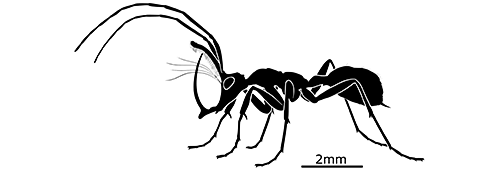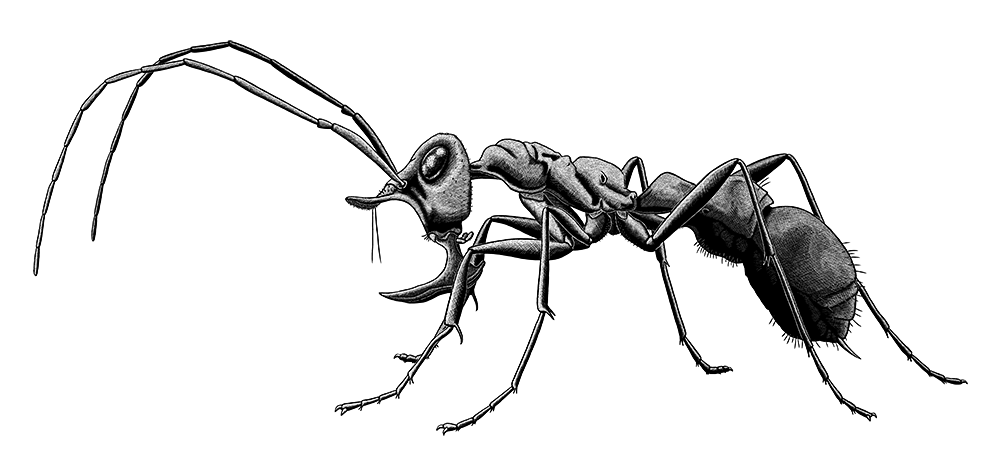Ants first evolved sometime in the Late Jurassic or Early Cretaceous, but only really began to diversify about 100 million years ago in the Late Cretaceous after the rise of flowering plants.
One of their evolutionary experiments around that time was a group called the haidomyrmecinae – also known as the “hell ants”.
Known from Asia, Europe, and North America, hell ants had bizarre-looking heads, possessing huge upward-curving scythe-shaped mandibles and a horn-like projection between their antennae.
They were fast-moving arboreal predators that would have fed mainly on other invertebrates such as soft-bodied beetle larvae, and unlike most modern ants their workers were probably solitary hunters. They were capable of gaping their mandibles by almost 180°, and when they got close enough to their targets the long sensory hairs around their faces triggered their jaws to snap vertically upwards, impaling their prey against their horn in a unique trap-jaw mechanism.
Some species also reinforced the exoskeleton of their horns with metal particles, strengthening them against impacts from both struggling prey and their own powerful jaws.
Ceratomyrmex ellenbergeri was one of the oddest-looking of all known hell ant species. Known from a few specimens preserved in amber, with adult workers up to 6mm long (~0.25″), it lived during the Late Cretaceous of Myanmar about 100-94 million years ago.
It had an especially pronounced horn and very long mandibles, which may have been adaptations for tackling significantly larger prey items than other hell ants.

And due to this being a species known from Burmese amber, sadly we also have to address the controversy surrounding these sorts of specimens. This amber is currently mined in incredibly dangerous conditions, often using child labor, with sales of both jewellery and paleontological specimens directly funding the ongoing violent conflict in the region.
It’s the fossil equivalent of blood diamonds, and a huge ethical dilemma for the paleontology community.


